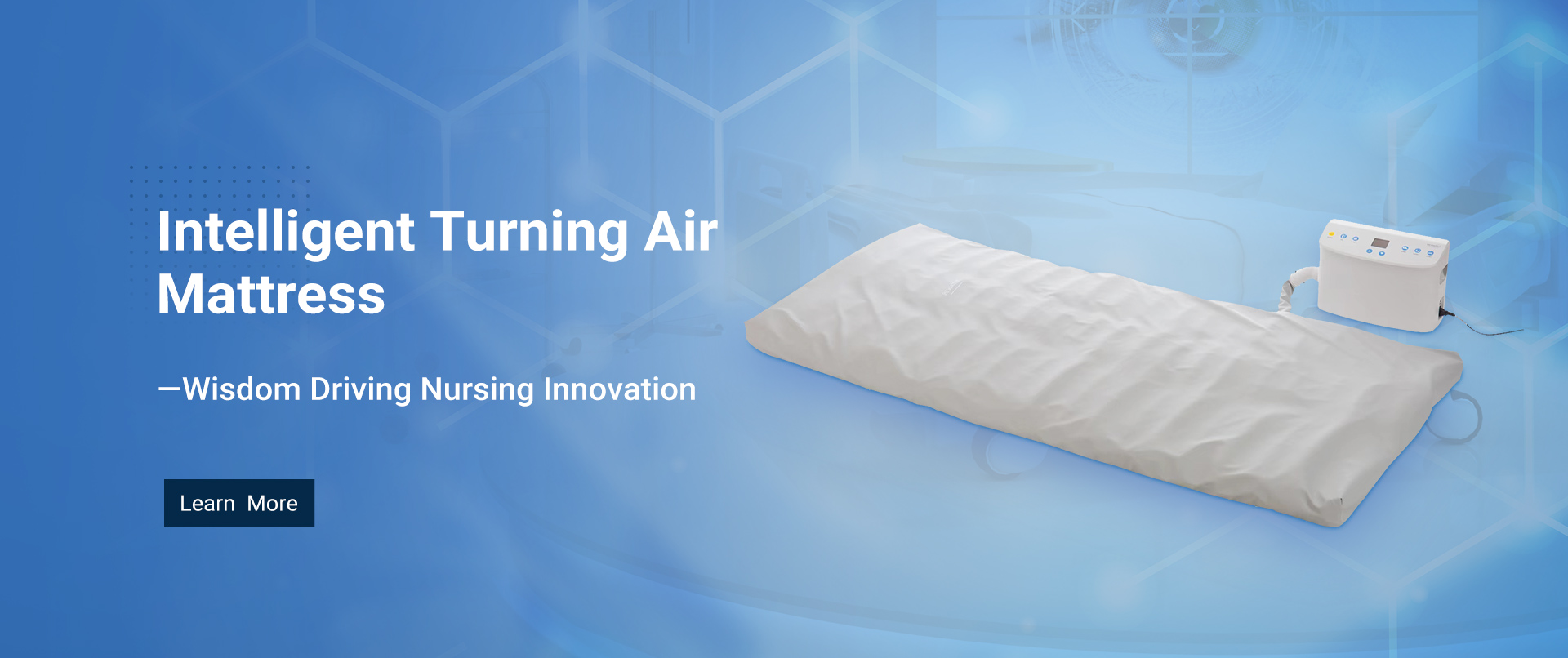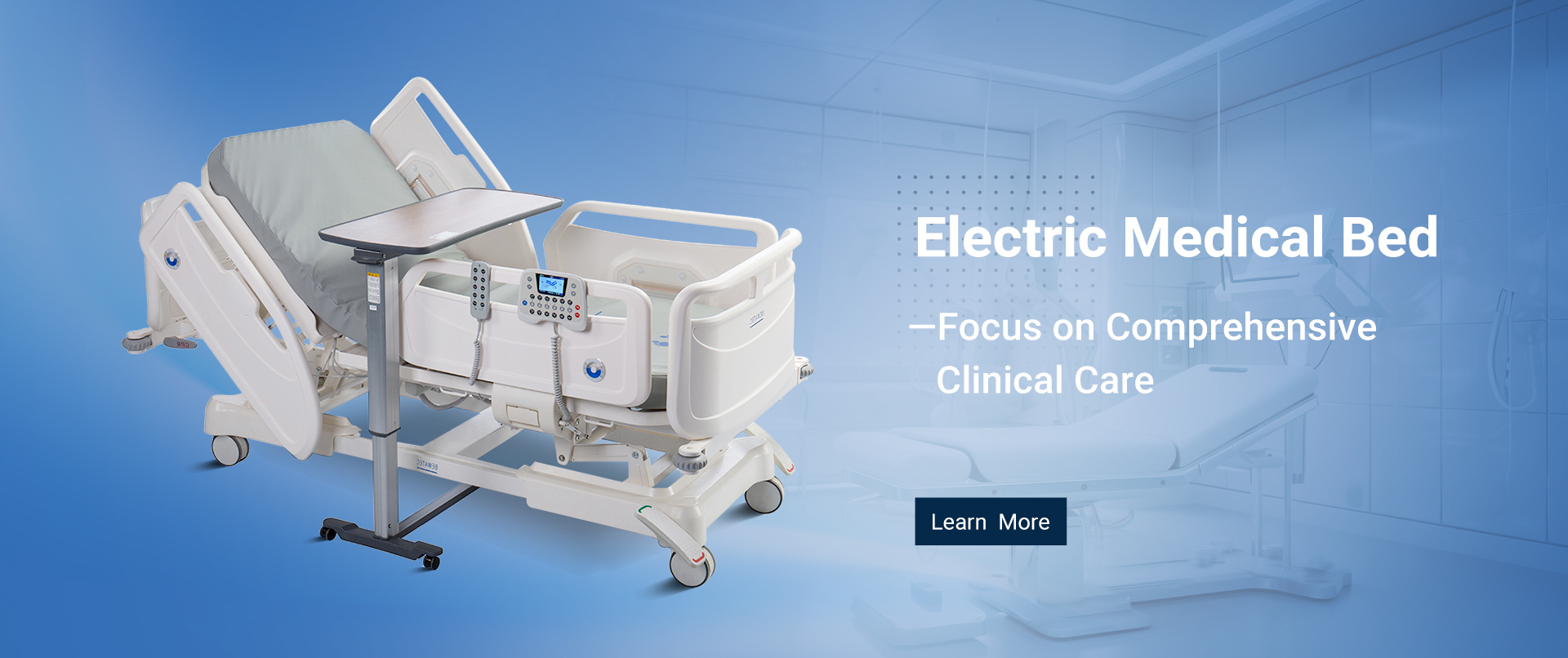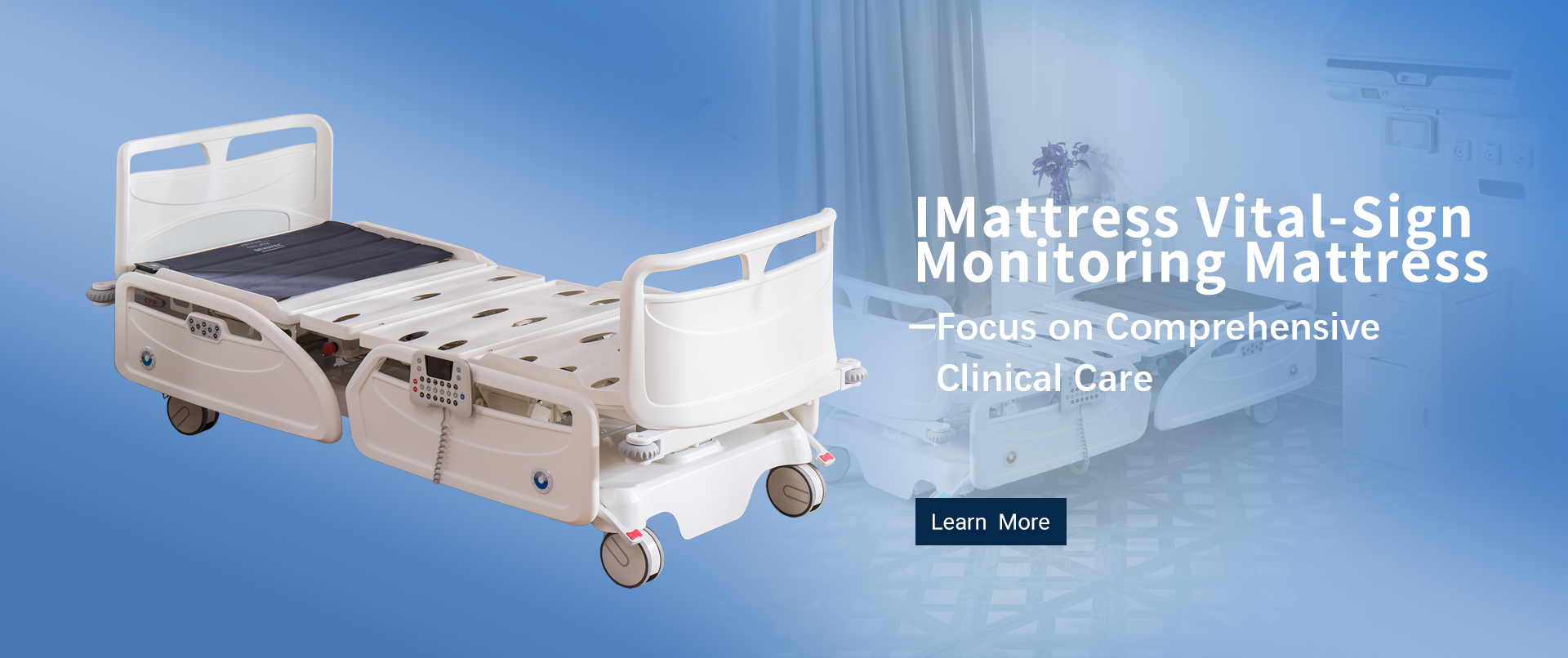
Transforming Patient Care: The Ultimate Guide to Electric Medical Beds and Their Benefits
Table of Contents
- Benefits of Electric Medical Beds for Patient Comfort and Recovery
- Key Features of Electric Medical Beds: Enhancing Mobility and Support
- Comparative Analysis: Electric Medical Beds vs. Traditional Hospital Beds
- Customization Options: Tailoring Electric Beds to Meet Individual Patient Needs
- Impact on Healthcare Facilities: Improving Workflow and Patient Care Efficiency
- Future Trends in Electric Medical Bed Technology and Innovation
- Enhancing Patient Care: Innovations and Insights from Industry Reports on the A7 Electric Medical Bed (Seven-Function) Aceso Series
- FAQS
- Conclusion
- Related Posts
These days, with technology moving so fast and changing healthcare as we know it, the Electric Medical Bed really stands out as a game-changer for patient care. Did you know? Recent reports suggest that the worldwide market for these beds is expected to hit around 3.4 billion USD by 2027, growing at a steady 6.5% each year. That tells us there's a big push for smarter medical equipment—stuff that not only keeps patients comfortable but also boosts safety and makes caregiving more efficient. Bewatec (Zhejiang) Medical Device Co., Ltd. is really leading the way in this digital revolution by creating smart solutions that give patients personalized and secure care. By incorporating cutting-edge tech into Electric Medical Beds, they’re aiming to shape healthcare environments that adapt to the changing needs of both the industry and the patients they serve.

Benefits of Electric Medical Beds for Patient Comfort and Recovery
Electric medical beds are a real game-changer in patient care. They come with so many perks that really boost comfort and help folks recover faster. Recent studies show that using these beds can cut down the risk of pressure ulcers by up to 70%. That’s pretty important, especially for patients who can’t move around much. The best part? These beds are super easy to adjust, so healthcare workers can position patients just right — making them more comfortable and aiding healing. This is especially crucial for folks dealing with chronic inflammation, which can slow down recovery and make things even more uncomfortable.
But it’s not just about comfort, either. Electric beds also help hospitals and clinics save energy. The EPA says the healthcare world uses a ton of energy, so finding smarter, greener solutions is a must. By switching to these electric beds, facilities can cut down on energy bills while still giving top-notch care. They often come with features that help save power, which is pretty neat. As healthcare continues to put patients first, incorporating electric medical beds is definitely a smart move — it’s all about making care better for everyone, in more ways than one.
Key Features of Electric Medical Beds: Enhancing Mobility and Support
Electric medical beds are really designed to make life easier for patients by giving them better mobility and support, especially for folks who might have a tough time moving around because of illness or just getting older. These beds come with all sorts of adjustable features that let you change your position pretty easily, which can make things way more comfortable and accessible. When you're shopping around, it's good to pay attention to things like adjustable height, the backrest, and leg elevation—these little tweaks can make a big difference, making it easier on both the patient and whoever's helping out.
A few tips if you’re trying to pick out the right electric medical bed: first, think about what the patient specifically needs. Make sure the bed is sturdy enough for their weight and height. Also, safety features are a must—look for side rails and locking wheels to avoid any accidental shifts. And don’t forget to check how simple it is to operate the controls; they should be easy enough for both the patient and the caregiver to use without hassle.
One more thing to keep in mind is the mattress compatibility. A good, pressure-relieving mattress can really boost comfort and help prevent bedsores, making the whole experience much better for whoever's in the bed. In the end, investing in the right electric medical bed isn’t just about convenience—it genuinely helps improve patient care and creates a more supportive environment for recovery and everyday living.

Comparative Analysis: Electric Medical Beds vs. Traditional Hospital Beds
Electric medical beds have really changed the game when it comes to patient care, offering some pretty awesome advantages over the old-school hospital beds. One of the biggest perks? Adjustable positioning. With just the push of a button, patients and caregivers can easily change the bed’s height or tilt — making things more comfortable and easier to get in and out of. This kind of flexibility is especially handy for folks who need to be repositioned often, whether they’re recovering from surgery or dealing with medical conditions. It also takes some of the physical strain off caregivers and makes everything safer for the patient.
Compared to that, traditional hospital beds usually don’t have these fancy features. They require manual adjustments, which can be a real hassle and take up time. This can sometimes lead to discomfort for the patient or make routine care a bit more challenging for staff. Plus, electric beds typically come with added safety features like side rails and locking systems, giving everyone peace of mind. Overall, switching to these electric options isn’t just about comfort — it really helps hospitals work more smoothly and efficiently, leading to better care all around.
Transforming Patient Care: The Ultimate Guide to Electric Medical Beds and Their Benefits
| Feature | Electric Medical Beds | Traditional Hospital Beds |
|---|---|---|
| Adjustability | Multi-position adjustable | Limited adjustability |
| Ease of Use | Remote control operation | Manual adjustments |
| Comfort | Enhanced padding and support | Standard padding |
| Patient Mobility | Facilitates easier transfers | More difficult transfers |
| Health Monitoring | Integrated monitoring systems | No integrated monitoring |
| Cost | Higher initial investment | Lower initial investment |
Customization Options: Tailoring Electric Beds to Meet Individual Patient Needs
Electric medical beds are really making a big difference these days when it comes to patient care. They’re not just your standard beds anymore; many come with customizable features that let healthcare providers tweak things to fit each patient's unique needs. Whether it’s adjusting the height, changing the backrest angle, or supporting the legs better — these features help make patients more comfortable and make caregiving a whole lot easier. Sometimes it feels like these beds are almost like personalized chairs, you know?

Over the past few years, the design of these beds has really improved, reflecting a deeper understanding of what patients actually need. Plus, with new tech like smart sensors and connectivity for health monitoring, these beds are becoming even smarter and more useful both in hospitals and at home. As healthcare keeps pushing for more personalized approaches, being able to adapt electric beds to specific medical conditions will totally become a must. In the end, it’s all about helping patients feel better and live better lives — and these innovative beds are definitely a step in that direction.
Impact on Healthcare Facilities: Improving Workflow and Patient Care Efficiency
Switching over to electric medical beds in healthcare settings really makes a difference, not just in how smoothly everything runs but also in how patients experience their care. These high-tech beds come with all kinds of features that help workers do their jobs more easily. For example, they can be adjusted in height or position, making it simpler and safer for caregivers to get to their patients — which cuts down on the chance of injuries during transfers. Honestly, this ergonomic design is a win-win: it keeps staff safer and helps patients feel more comfortable because they get more personalized attention.
Plus, these beds are pretty clever when it comes to keeping an eye on patient health. Many of them have built-in tech that can track vital signs, so nurses and doctors can spot any sudden changes right away. And because the controls are usually within arm’s reach—either on the bed itself or at the nursing station—it’s much quicker to respond to patient requests or emergencies. All of this just makes care more efficient, which not only boosts patient happiness but also helps healthcare facilities use their resources a lot better. Ultimately, it’s about making sure patients get timely, effective treatment without all the hassle.
Future Trends in Electric Medical Bed Technology and Innovation
As healthcare is constantly changing, electric medical beds are really leading the way in new tech and innovation—playing a big part in making patient care better than ever. I recently came across a report from Grand View Research that estimates the global market for these beds will hit around $4.4 billion by 2025. That’s pretty impressive, especially considering it’s growing at about 4.7% every year since 2019. A lot of this growth comes from a rising demand for smarter, tech-savvier medical equipment that not only makes patients more comfortable but also helps healthcare workers do their jobs more efficiently.
Looking ahead, the trend? It’s all about smarter beds that sync up with healthcare systems as a whole. Some reports point out that beds with Internet of Things (IoT) tech can keep an eye on patient vitals in real time and notify staff immediately if something’s off. There was even a study in the Journal of Healthcare Engineering mentioning that these kinds of innovations can speed up emergency responses by up to 30%. Plus, more advanced beds are starting to include AI-powered analytics, which help position patients better and even prevent issues like pressure ulcers—that’s huge for patient recovery and comfort. All in all, as healthcare gets more connected and efficient, electric medical beds are definitely going to be a key part of how patient care improves in the years to come.
Enhancing Patient Care: Innovations and Insights from Industry Reports on the A7 Electric Medical Bed (Seven-Function) Aceso Series
The A7 Electric Medical Bed of the Aceso Series exemplifies significant advancements in patient care. This state-of-the-art bed is designed with a unique focus on enhancing comfort and support for patients, ranging from emergency situations to full recovery. The innovative features of the Seven-Function design cater to the diverse needs of patients and healthcare providers alike, ensuring that care is both efficient and effective.
One of the standout aspects of the A7 bed is its intelligent functionality, which optimizes patient positioning and supports critical care protocols. The design includes various adjustable positions that facilitate patient mobility and comfort, reducing the risk of bedsores and enhancing overall health outcomes. The bed is not just a piece of equipment; it serves as an integral part of the patient care process, allowing healthcare professionals to concentrate more on critical aspects of treatment while relying on this technology to manage the physical needs of their patients.
Moreover, insights drawn from industry reports emphasize the importance of integrating technological innovations in the healthcare sector. By adopting the A7 Electric Medical Bed, healthcare facilities can leverage the benefits of modern design and engineering to transform patient experiences, ultimately contributing to improved recovery rates and satisfaction levels. As the healthcare industry continues to evolve, innovations such as the Aceso Series beds signify a pivotal step towards achieving excellence in patient care.
FAQS
: Electric medical beds are designed to provide enhanced mobility and support for patients, particularly those with limited independence due to illness or aging, by allowing for adjustable positioning to improve comfort and accessibility.
Key features to look for include adjustable height, backrest, leg elevation, safety features like side rails and locking wheels, and ease of use of the control mechanisms.
Electric medical beds improve caregiver safety by allowing adjustable height and positioning capabilities, reducing the risk of injury during patient transfers and facilitating easier access to patients.
These beds enhance patient care efficiency by facilitating better monitoring of vital signs and reducing response times to patient requests for assistance, ultimately improving patient satisfaction and care delivery.
A high-quality, pressure-relieving mattress can enhance patient comfort and help prevent bed sores, contributing to a better overall experience for users of electric medical beds.
Future trends include smart features integrated with healthcare systems, real-time monitoring of patient vitals, and AI-driven analytics for optimizing patient positioning and reducing pressure ulcers.
The global electric medical bed market is projected to reach USD 4.4 billion by 2025, with a compound annual growth rate (CAGR) of 4.7% from 2019.
By enhancing workflow and efficiency, electric medical beds allow healthcare facilities to allocate resources more effectively, ensuring timely and effective treatment for patients.
Integrated technology in electric medical beds enhances monitoring and responsiveness to patient needs, allowing healthcare providers to react promptly to critical changes in a patient’s condition.
Assessing a patient’s specific needs ensures that the selected bed accommodates their weight and height, providing optimal support and comfort tailored to individual requirements.
Conclusion
Electric Medical Beds are really changing the game in patient care, making everything way more comfortable and helping folks recover faster. These high-tech beds come with features that boost mobility and support, so they’re a big step up from your average hospital bed. Plus, the fact that they can be customized means healthcare providers can really tailor them to fit each patient's unique needs—making care much more personal and attentive. On top of that, bringing Electric Medical Beds into healthcare facilities helps streamline daily workflows and boosts overall efficiency in patient care.
Looking ahead, the technology behind these beds is definitely headed for more innovations. Companies like Bewatec (Zhejiang) Medical Device Co., Ltd. are really leading the charge with smart medical solutions that focus on keeping patients safe, comfortable, and cared for in a way that feels personalized. They're all about pushing the boundaries of digital transformation in the healthcare industry, and honestly, it’s pretty exciting to see what's coming next.
Related Posts
-

Revolutionizing Patient Care: The Impact of Smart Medical Beds on Hospital Standards
-

Unlocking Comfort: Benefits of the Best Patient Bed for Enhanced Recovery
-

Future Innovations in Best Hospital Equipment Bed for 2025 and Beyond
-

Unmatched Quality of Hospital Beds from Chinas Leading Factory Trusted Worldwide
-
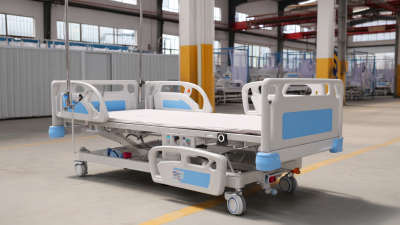
Common Challenges Faced by Global Buyers in Sourcing Medical Beds: An In-Depth Analysis
-
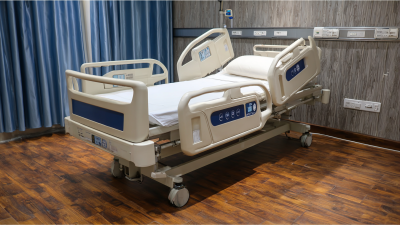
7 Compelling Reasons to Choose a Patient Bed With Mattress for Optimal Comfort
Blog Tags:


